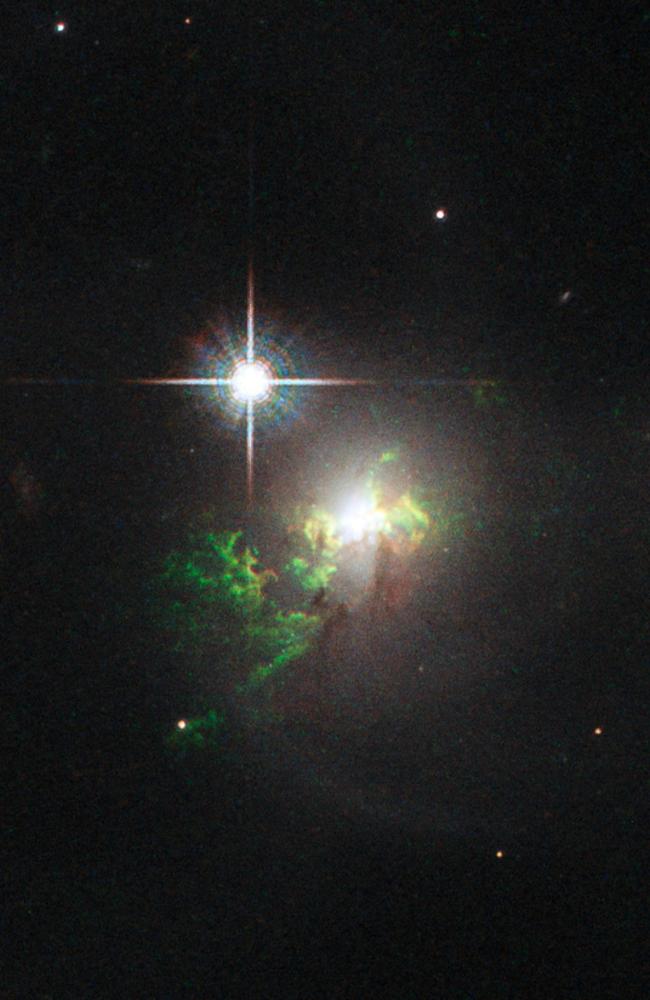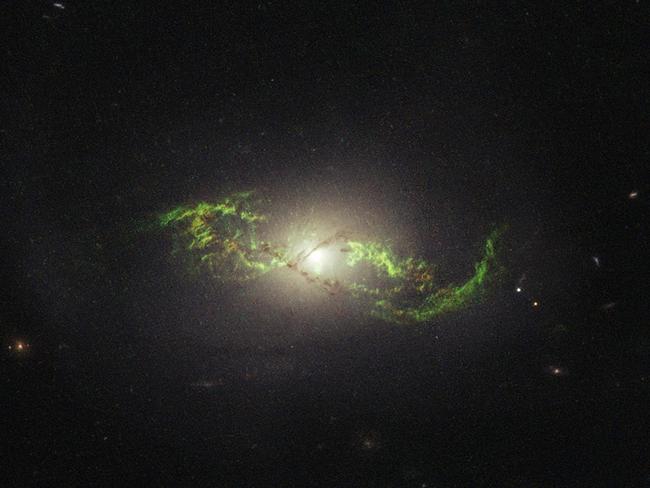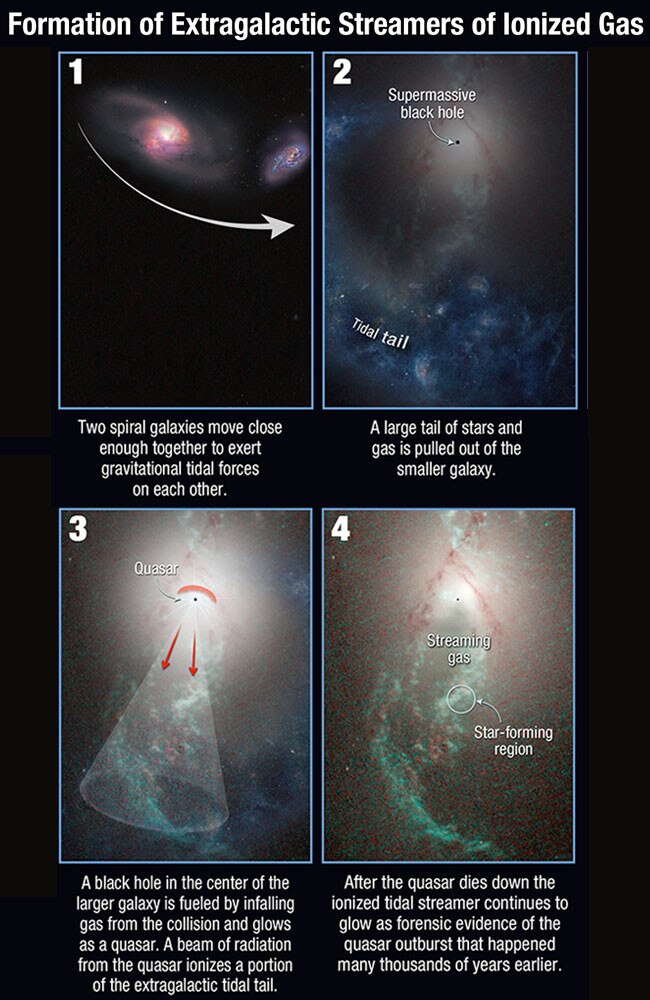Hubble finds ghostly remains of mysterious astronomical ’poltergeist’
HUBBLE has seen a ghost. It’s eerie. It’s green. It’s from a dead quasar. So what is this spooky presence in our night skies?

HUBBLE has seen a ghost. It’s eerie. It’s green. It’s from a dead quasar. So what is this spooky presence in our night skies?
NASA’s Hubble Space Telescope has actually photographed a set of these wispy green clouds. They’re the ephemeral remains of lively quasars.

ECHOES, NOT ECTOPLASM
It’s not ectoplasm. It’s actually oxygen. In deep space.
“Oxygen atoms in the filaments absorb light from the quasar and slowly re-emit it over many thousands of years,” a NASA statement reads. Other elements in the clouds are hydrogen, helium, nitrogen, sulphur, and neon.”
Link: http://t.co/G8bqQbvh0M The #Rosetta space probe has had a near-death experience after a brush with Comet 67P. pic.twitter.com/eSUW1Lsqnl
— Jamie Seidel (@JamieSeidel) April 4, 2015These green filaments are glowing trails of gas pulled out into space as two galaxies collide:
Tens of thousands of light-years long, these filaments are still slowly orbiting their newly merged galaxy.
But the ghostly green clouds have been propelled so far outside their galaxy that they may not begin to glow from a quasar outburst at their galaxy’s heart for up to tens of thousands of years after the event.

GHOSTS OF QUASARS
A quasar is the immensely bright region about the supermassive black hole at the centre of a galaxy. As matter is sucked into this black hole, it gets intensely hot — forming the brilliant region we call a quasar.
Sometimes these quasars erupt with intense jets of particles beaming out into space.
But that doesn’t explain these ectoplasm-like green glowing clouds.
The universe just got spooky with dark matter passing through itself and everything else.http://t.co/54vJgG7R2p pic.twitter.com/UNis3d3uYT
— Jamie Seidel (@JamieSeidel) March 27, 2015“The quasars are not bright enough now to account for what we’re seeing; this is a record of something that happened in the past,” astrophysicist Bill Keel says. “The glowing filaments are telling us that the quasars were once emitting more energy, or they are changing very rapidly, which they were not supposed to do.”

BINARY BLACK HOLES
The green-stained space particles may be trying to tell us something: That there are actually pairs of black holes at the hearts of these galaxies.
As they orbit each other, they interact differently — changing the brightness of the quasar surrounding both of them in the process.
Opportunity has overcome a mind-wipe and finished a marathon, but can it survive budget cuts? http://t.co/MCbDxIrmRP pic.twitter.com/QLjrbasGiS
— Jamie Seidel (@JamieSeidel) March 26, 2015Such a “dimming switch” would explain why the luminosity of the gas clouds doesn’t match that of the galaxy’s core.
“A pair of black holes whirling about each other could disrupt the steady flow of infalling gas,: the NASA statement reads. “This would cause abrupt spikes in the accretion rate and trigger blasts of radiation.”

‘GOBLIN’ HUNT
The first of these ‘green goblins’ was discovered in 2007 by a Dutch schoolteacher. She was part of the online Galaxy Zoo project which asks the general public to help classify the more than one million galaxies captured by the Sloan Digital Sky Survey.
The images were so intriguing, the University of Alabama set about finding more.
More than 200 people volunteered to assess over 15,000 galaxies displaying quasars.
Some 20 galaxies have since been found with gas ionised by quasar radiation surrounding them.




